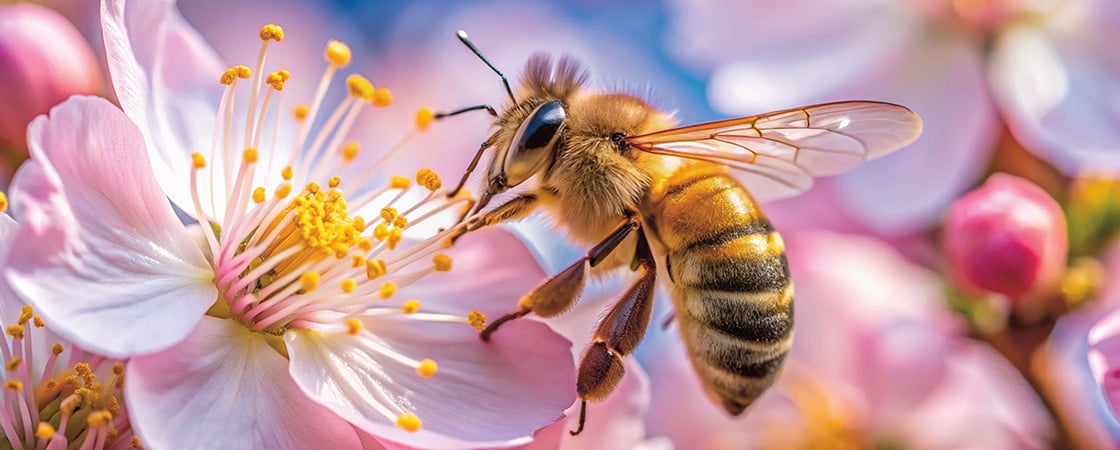It’s a breezy spring day. The sun shines as you buzz from flower to flower. Your tiny body is layered with fuzzy black and yellow stripes. You’re a honeybee!
Today you’re on a mission. Your task? Finding food for your family.
You spot a sunflower ahead, land on the plant, and slurp! You suck up a sweet juice called nectar using your long, straw-like tongue. A sticky powder called pollen clings to your body as you fly away. Moments later, you spot another flower. As you dive down for more food, some of the pollen on your legs falls onto this flower.
You don’t realize it, but you’re not only finding food for your family, you’re also spreading pollen—and helping the entire planet!
It’s a breezy spring day. The sun is shining. You fly from flower to flower. Your tiny body is covered with fuzzy black and yellow stripes. You’re a honeybee!
You see a sunflower in front of you. You land on the sunflower and slurp! You suck up a sweet juice called nectar with your tongue. Your tongue is long like a straw. As you fly away, a sticky powder called pollen clings to your body. Then you spot another flower. You dive down for more nectar. Some of the pollen on your legs falls onto this flower.
You don’t realize it, but you’re not only finding food for your family. You’re also spreading pollen and helping the entire planet!

